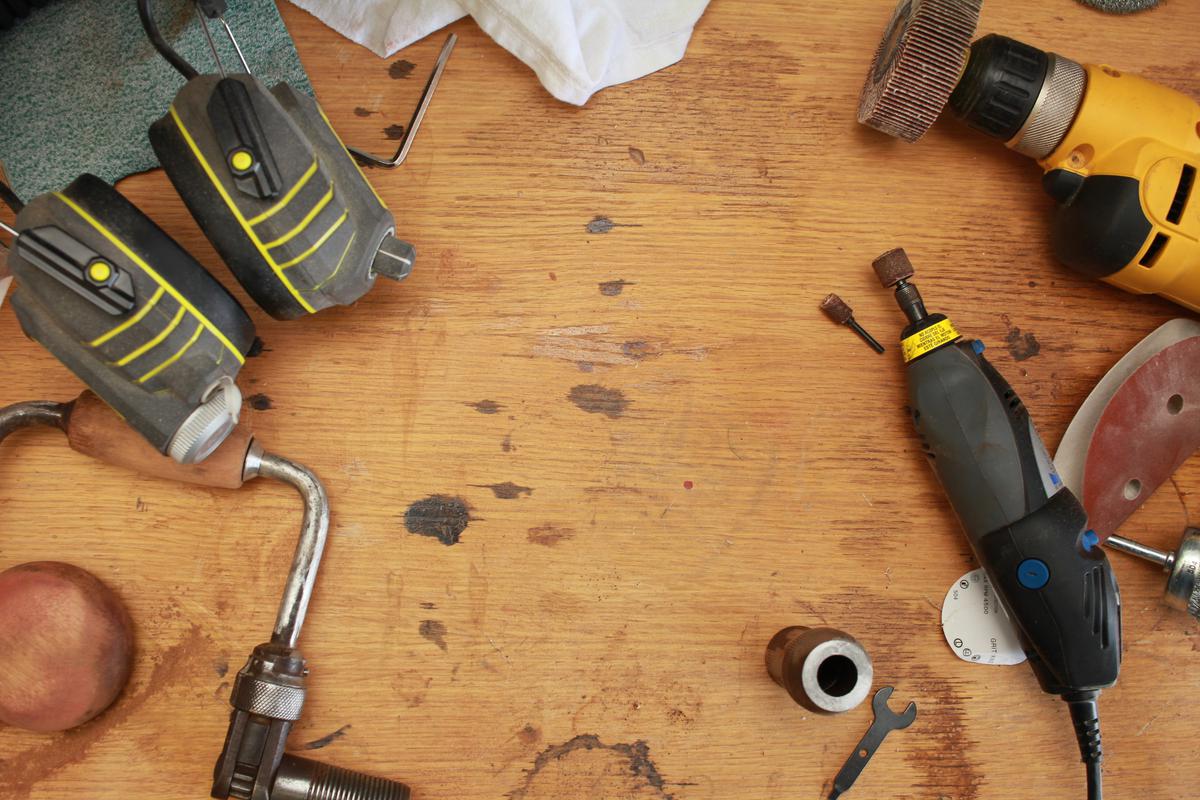When it comes to technology and tools there will always room for improvement. With developments in tech constantly enhancing everyday objects, found in both industrial settings and at home, old favourites are getting a digital upgrade.
Torque Wrenches
Improving efficiency and reducing maintenance errors are key ways to drive costs down in a manufacturing company. By pairing smart torque wrenches with Google Glass, GE Aviation – a US aircraft engine manufacturer, was able to achieve precision results through a pilot program.
 Photo by Hal Gatewood on Unsplash
Photo by Hal Gatewood on Unsplash
Torque wrenches are commonplace throughout a wide variety of industrial practices, commercial garages and homes. The valuable tool is available universally due to its popularity. RS Components hosts a selection of torque wrenches online. The wrenches are designed to apply specific torque, or force, when fastening objects. They are used where the tightness of screws is vital. Often, when dealing with equipment that needs to be air or water tight, these wrenches stop the mechanic from over tightening or under-tightening the nuts and bolts.
When manufacturing aircraft engines, accuracy is crucial. If a screw is too loose or too tight, the impact can vary from repeat maintenance to an engine shutting down during flight. GE Aviation, in partnership with Upskill, used the Skylight industrial AR platform on Google Glass to guide and instruct mechanics as they performed the tasks.
The pilot program set out to simply reduce maintenance errors, but GE Aviation found another, surprise benefit. When using the Wi-Fi enabled torque wrenches in combination with Google Glass, the mechanics’ improved efficiency by 8-12%.
Due to the positive impact of using the tech enhanced tools, GE Aviation are now looking at ways to include the use of smart wrenches and Google Glass throughout other areas of their company, across the world.
Thermocouples
With applications ranging from toasters to jet engines, thermocouples are a reliable way to record temperature. Inexpensive and incredibly hardwearing, this type of heat sensor has been used for over two centuries across multiple industries. After years of research and product development, academics at the University of Cambridge have found a more effective way to manufacture them.
 https://upload.wikimedia.org/wikipedia/commons/4/49/Thermocouple_K_%282%29.jpg
https://upload.wikimedia.org/wikipedia/commons/4/49/Thermocouple_K_%282%29.jpg
Thermocouples are electrical sensors used to measure a number of different temperature ranges. The various types of thermocouples are on RS Components. The standard heat sensor consists of two wires made from different types of metal, joined at one end to create a junction where the temperature is measured. These wires are enclosed in an external sheath, often containing manganese, which acts as a barrier between the wires and the local atmosphere.
Professors at Cambridge discovered that the single sheath design would not always withstand repeated use at temperatures over 1000°C. The heat would cause the manganese to migrate from the sheath and affect the wires collecting data, altering its ability to accurately measure temperature. They concluded that by using a second sheath, which would trap the manganese, the sensor would be more resilient and continue to produce accurate results for longer.
As of 2017, the updated design of thermocouples will reportedly start to be tested in various manufacturing industries and marketed to global traders.
QWERTY Keyboards
Have you ever questioned the order of the alphabet on a keyboard? Probably not, as QWERTY keyboards have been used and wholly accepted as the norm since the 1870s. SwiftKey, a tech start up, wants to innovate typing, taking keyboards in a whole new direction.
![]() Photo by rawpixel.com on Unsplash
Photo by rawpixel.com on Unsplash
Invented in the 1860s, the very first version of the keyboard contained all letters in alphabetical order, set out in two rows. However, it was quickly realised that when using a typewriter, having the popular letters adjacent would cause the metal arms to jam. So, by the 1870s, the QWERTY system was designed, with both the arrangement of letters and the staggered layout implemented to cause less wear on the early typewriters.
As typewriters turned to PCs and laptops and tablets and phones, long gone were the days of metal arms and jamming mechanisms. Yet, the QWERTY still remained.
SwiftKey are rethinking the keyboard to better fit the digital age. What if the phone keyboard could adapt to behave in a way that suits the user’s individual needs? That’s how SwiftKey plan to revolutionise typing.
Using an algorithm that isn’t dissimilar to predictive text, the intuitive app learns its user’s behaviour and starts to make smart suggestions based on the initial typing. This results in faster typing, quicker communications and improved efficiency.
Elements of the SwiftKey innovation are already in use across Apple and Android devices, but future developments of the keyboard remain excitingly mysterious. Will technology ever fully stray from the QWERTY system?
Future Tech and Tools
The recent developments listed above are bold examples of how even timeless and brilliant design can still be improved upon. Devices that have been used for centuries are getting updated, thanks to the developments in technology.
With new and exciting advances in technology being recorded everyday, it’s exciting to think what impact this will have on some of our most valued tools in the future. To keep up to date with technology news, follow the latest advances.
